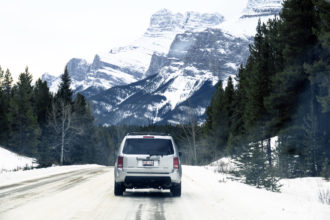Tips to Navigate Winter Driving in Colorado Mountains (part 1)
 If you live in Colorado, there’s a good chance that you understand how dangerous the roads can be when the weather turns cold. This is especially true when you’re driving in areas like the Rocky Mountains, where winter conditions can quickly turn deadly. We want you to avoid accidents throughout the season, so we’ve devised a two-part blog that will cover several tips to help you stay safe. Here are the first five:
If you live in Colorado, there’s a good chance that you understand how dangerous the roads can be when the weather turns cold. This is especially true when you’re driving in areas like the Rocky Mountains, where winter conditions can quickly turn deadly. We want you to avoid accidents throughout the season, so we’ve devised a two-part blog that will cover several tips to help you stay safe. Here are the first five:
Tip #1: Make Sure It’s Road-Worthy
First and foremost, you want to ensure that any vehicle you take on the road has been checked for “the basics” in terms of road-worthiness. This is true no matter when or where you’re driving, but especially in areas like the Rocky Mountains during the winter season. It’s a good idea to have your engine tuned by a mechanic, but you should at least check these things:
- Battery – Remove any corrosion that’s built up with baking soda and water.
- Tires – Ensure a good level of traction and fill each one to the proper level. Snow tires are a great option.
- Lights – Make sure they’re operational, including the high beams.
- Fluids – All fluids should be at the appropriate levels.
- Oil – Get it changed if it’s due anytime soon. Use either winter or all-season oil.
- Wiper Blades – Clean or replace them, depending on their condition. Winter blades are also an option.
Tip #2: Plan Ahead
Before you set out on the road, make sure that you have proper directions to get where you need to go. Many people use the GPS on their phones, but if reception gets bad, you’ll need a backup set to avoid being delayed or getting lost. Also, check weather forecasts and traffic reports before hitting the road in case of closures or especially bad conditions.
Tip #3: Compile a Survival Kit
Having the proper survival items in your car is a surefire way to stay safe in the event that anything happens while navigating the Rockies and other dangerous areas. You may never need any of these things, but it’s better to be safe than sorry. Here are several items to pick up – feel free to add whatever you think is appropriate to the list:
- First aid kit
- Water and dried foods
- Flashlight and extra batteries
- Jumper Cables
- Sleeping bag and/or space blanket
- Flares
- Tire Chains
- Hand Warmers
- Fire-starting items
- Spare clothes
Tip #4: Maintain a Safe Speed
The sad truth is that some drivers navigate the roads recklessly no matter what the conditions are. Avoid this type of behavior at all costs. There’s no reason to whip around corners or ignore the speed limit when you’re in a hurry. This is how accidents happen. Sure, you may get home safe and sound many times, but it only takes one mishap to change your life in devastating ways. Saving a few extra minutes here and there is simply not worth the risk.
Tip #5: Fill Your Tank Before Heading Out
The general rule when driving in winter conditions is to keep your gas tank more than halfway full. First, this will keep your gas line from freezing. And if you do find yourself stranded, having plenty of gas will keep you warm until help arrives. Plus, it will obviously ensure that you have enough fuel to get where you need to go, especially if you’re forced to detour at any point in your journey.
These tips will give you a great start in staying safe during the winter months. We’ll be back in a couple of days with another five tips to round out the list. In the meantime, if you experience any traffic accidents or other personal injuries, please reach out to the attorneys at Mintz Law Firm for a free case evaluation.
